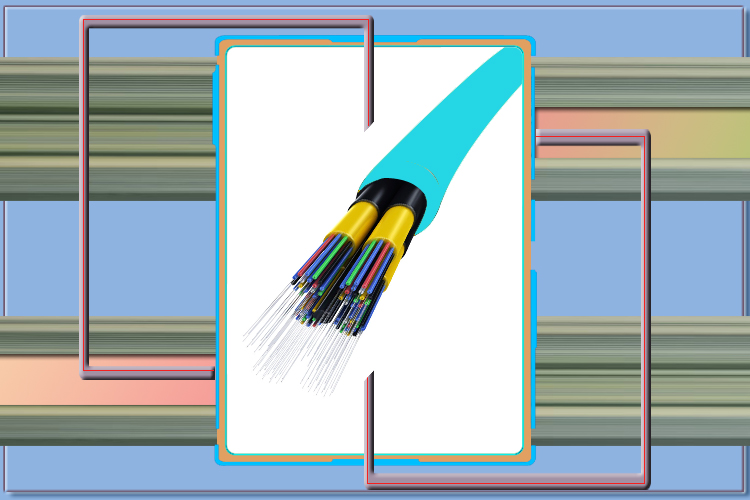As the world becomes increasingly connected, fiber optic cables play a vital role in ensuring high-speed data transmission and seamless communication
Introduction
Fiber optic cables have revolutionized the world of telecommunication and internet connectivity. With the rapid expansion of global networks and increasing demand for high-speed connectivity, investing in fiber optic cable technology has become paramount. In this article, we delve into the fascinating world of optical fiber cables, covering their benefits, types, and applications to give you a comprehensive understanding of this essential technology.

What are Fiber Optic Cables?
Fiber optic cables are a type of cable that utilizes light to transmit data. They consist of tiny strands of glass or plastic, known as optical fibers, that are bundled together and protected by an outer layer. The fibers are designed to transmit light signals over significant distances, allowing for high-speed data transfer with minimal loss.
Benefits of Fiber Optic Cables
1. High-speed Data Transmission: Due to their ability to transmit data through light signals, fiber optical cables offer dramatically higher bandwidths and transmission speeds compared to traditional copper cables. They allow for faster download and upload speeds, making them ideal for supporting various applications such as video streaming and online gaming.
2. Greater Signal Range: Fiber optic cables are capable of transmitting data over much longer distances without significant degradation compared to copper cables. This ability to cover vast distances makes them a top choice for telecommunication companies and long-haul data networks.
3. Immunity to Electromagnetic Interference: Unlike copper cables, fiber optic cables are immune to electromagnetic interference, making them ideal for use in areas with high electrical noise. This immunity enhances the signal integrity and ensures that data is transmitted accurately and without distortion.
4. Improved Security: Data transmitted through fiber optic cables is inherently more secure due to the inability of the signals to be easily intercepted or tapped. This makes fiber cables more secure for sensitive data transmission when compared to traditional copper cables.
5. Durability and Longevity: Fiber optic cables are more resistant to environmental factors such as temperature fluctuations and moisture, ensuring a longer lifespan and reduced maintenance costs.
Types of Fiber Optic Cables
1. Single-mode Fiber Cables: These cables utilize a single strand of glass to transmit data, providing the highest potential speeds and greatest distance range. Single-mode cables are ideal for long-distance telecommunication applications.
2. Multi-mode Fiber Cables: Multi-mode cables contain multiple strands of glass, allowing for multiple light paths to transmit data. While they offer lower overall speeds and shorter distance ranges than single-mode cables, they are more affordable and better suited for short to medium distance applications.
3. Plastic Optic Fiber Cables: A more cost-effective alternative to traditional glass fiber cables, plastic optical fibers are ideal for short-range applications with lower data rates, such as audio and visual cables within homes and business premises.
Applications of Fiber Optic Cables
1. Telecommunications: Fiber optical cables are widely implemented in telecommunication networks to deliver high-speed broadband and voice services to homes and businesses.
2. Internet Service Providers (ISPs): ISPs utilize fiber optical cables to provide high-speed internet connectivity to their customers, allowing for smoother browsing and faster uploads and downloads.
3. Data Centers: Due to the need for fast and reliable data transmission, fiber optical cables are a crucial component of data centers, ensuring seamless connectivity between servers and storage devices.
4. Cable Television (CATV): Fiber optical cables are employed in CATV networks to deliver high-quality television signals with minimal signal loss.
5. Industrial and Medical Applications: Fiber optic cables are widely used in various industrial, medical and military applications, such as remote sensing, fiber optic gyroscope, and high-resolution imaging, due to their immunity to electromagnetic interference and ability to transmit data accurately over long distances.
Conclusion
As data transmission demands continue to grow, fiber optic cables remain a cornerstone of a rapidly evolving telecommunications landscape. Their various benefits and adaptability make them a vital conduit for ensuring reliable high-speed connectivity in diverse applications.

 What opportunities and challenges does free-space optical communication technology face?
What opportunities and challenges does free-space optical communication technology face?
 Opelink MPO Products for High-Speed Data Center Applications
Opelink MPO Products for High-Speed Data Center Applications
 CWDM vs. DWDM: Which Optical Transmission Technology Should You Choose?
CWDM vs. DWDM: Which Optical Transmission Technology Should You Choose?
 Major Application Fields and Detailed Explanation of Fiber Optic Switch
Major Application Fields and Detailed Explanation of Fiber Optic Switch